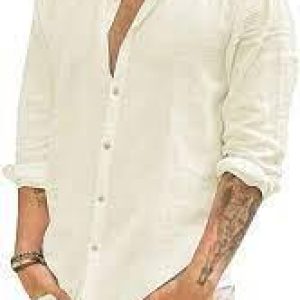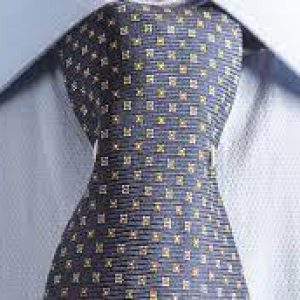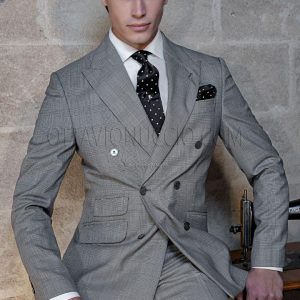Home » Blog » Style&Fashion » FORMAL DRESS ELEGANCE: 23 MISTAKES TO AVOID

FORMAL DRESS ELEGANCE: 23 MISTAKES TO AVOID
Is formal dressing really as easy as it looks? Unfortunately not, even in formal dressing one can make mistakes that clash with the ‘basic rules of elegance’
These are unwritten rules that nevertheless ensure that our look is impeccable. Since no one is born learned, however, it is plausible to make mistakes, especially at the beginning, the important thing is to learn from your mistakes.
To make this easier for you, we have compiled a list of the twenty-three worst mistakes a gentleman can make:
1. The oversized suit:
The problem is quite obvious, wearing an ‘oversized’ suit is perhaps the worst mistake one can make. Whether the suit is too loose or too tight, the result is the same: the figure is misshapen and disharmonious. The ideal in fact is to opt for a made-to-measure dress that respects the shape of your physique.

2. Trousers that are too long or too short:
Trousers also follow the same rule as the dress. The length must respect our height. Excluding the objectively ugly aspect of seeing us wearing trousers that are shaping us, we think that if we do not respect our physique we will look like we are in the so-called ‘growth phase’.
3. Elegant trousers without a crease:
If you want to be really formal, it is good not to forget the crease of the trousers. One of the canons of classic elegance is to wear trousers with a vertical crease in the middle of the leg. As a straight line, it slims the figure and gives the look a more refined and rigorous style.
4. The unironed shirt:
Yes, the ironed shirt is one of the main symbols in contexts where elegance has value. Although it is one of the most difficult garments to iron, it is a good idea to do so, since an unironed shirt will automatically make a bad first impression, so much so that it is considered unacceptable in contexts where formality is everything. Remember that the ironed shirt is the symbol of freshness and personal care.

5. T-shirt or vest visible under the shirt:
If you want to wear a white shirt or one made of light fabric, it is a good idea to make sure, before going out, that what you are wearing underneath is not visible. In fact, although there are cases where ‘see-through’ looks appealing, in this case it is not at all.

6. Shirt outside the trousers:
To be excluded in formal contexts, it can be worn if one wants to appear with a more ‘cool’ and disinterested look in other contexts.

7. Short-sleeved shirt:
Not widely used and with limited popularity, it is best not to wear them in the case of a formal event, therefore opting for the classic long-sleeved shirt.

8. Rolled-up shirt sleeves:
Despite the fact that the heat makes you want to roll up your sleeves into ungainly sausages, it is a good idea to keep them stretched out; this is because the world of formality always requires a certain rigour that must not fail even in the most uncomfortable situations (such as a rise in the perceived temperature). Besides, everyone knows that elegance also means experiencing a certain amount of suffering.
9. Shirt or jacket sleeves too short or long:
As with trousers, shirt or jacket sleeves must also be the right length. Needless to say, the best option would be to wear tailor-made shirts, however, there are rules of etiquette that help to understand what the right length ratio between shirt and jacket sleeve should be: with lowered arms the shirt sleeve should be relaxed and extended, the cuff reaches the thumb joint and protrudes 1cm or so more than the length of the jacket sleeve.

10. Tie without jacket:
Wearing only a shirt and tie does not fall within the lines of classical elegance according to which jacket and tie are two inseparable elements. In fact, if one wants to respect the terms laid down by etiquette, it is best to wear a tie if, at the same time, one wears a jacket over the shirt.

11.The tie knot is too big:
The purpose of the tie is to slender the figure, and how could it do that with a knot that is too big? Simple, it doesn’t. The result is an overly large and heavy knot that clashes with the rest of the look. To avoid such a situation, it is good to choose the tie knot according to the collar of the shirt you are wearing.

12. Matching clutch bag and tie:
If you thought that wearing a matching clutch bag with a tie was synonymous with style, you’re wrong. In fact, the pochette should never be patterned or coloured with either the tie or the shirt; it represents the distinctive accessory, the expression of our flicker of extroversion. This rule can only be broken if the classic combination of white shirt and white pochette is used.

13. Dinner jacket without a bow tie:
Surrender. If you want to wear a dinner jacket, you must accompany it with a bow tie and leave the tie hanging in the wardrobe. Follow the same rule for the morning suit and tailcoat, or in general the classic black tie or white tie look. If you do not have a bow tie, opt for a classic elegant suit such as a three-piece with a matching waistcoat.
14. Dinner jacket with belt:
The dinner jacket style is dry and minimal, wearing a belt would detract from the looseness of this look. The belt in fact heavily emphasises the waist and takes away elegance from the figure, it is advisable to opt for braces, considered the best companion for black tie suits.

15. White socks:
Impossible to match except with “total white” looks, wearing them would be a sin against classic elegance. To their detriment it must be added that apart from being practically impossible to hide, the only way would be to wear very long trousers but, as mentioned above, this is not the case. Better to opt for socks that from a chromatic point of view accompany the transition of colour from trousers to shoes.

16. Smart shoes without socks:
Even worse than wearing white socks, an elegant shoe worn without socks is to be considered a fall in style. As mentioned earlier, etiquette demands that the sock acts as a harmoniser between the trousers and the shoe.

17. Sports shoes:
As you can tell from the name itself sports shoes are best, when opting for an elegant and formal look, to leave them in the shoe cupboard. In fact, better to consider them as banned. If you are wearing an elegant suit, it is good to wear elegant shoes, even better if polished.
18. Fanny pack or purse:
On elegant occasions, both are banned. The fanny pack, the least elegant male accessory of all, but also the purse have no place in the dictates of classic elegance. No matter if one has to carry something, which requires the use of either accessory, the solution does not change: one does not carry it.

19. Broken not broken:
The purpose of this outfit is to break up the colour scheme of the outfit through the combination of different colours, so matching two garments with a different shade of the same colour is not ‘breaking up’ but making a tone on tone. Tone on tone is a combination that is difficult to master, it takes little to obtain an unpleasant chromatic effect. In conclusion, if you want to create a break, choose garments that do not belong to the same colour band.

20. Overly broken:
If the use of tone on tone is risky, combining too many colours, so as to look like a harlequin, is also not within the rules of the etiquette of elegance. The ideal is to combine 3, maximum 4 different colours within an outfit, even better if you combine classic colours such as white, blue, beige and grey…just so you don’t get it wrong.

21. Dinner jacket or black suit before 6 pm:
Being considered the male evening dress, why wear it at daytime events? The rules for the dinner jacket or more generally for black suits, in fact, stipulate their use only for all those events taking place after 6 pm. In addition, since you can choose from other types of men’s suits that are perfectly suited to daytime events, why not opt for one of them?

22. Double-breasted unbuttoned:
Whether you are wearing a suit, jacket or blazer, the double-breasted suit should always be buttoned (except for the last button). Classical elegance dictates that double-breasted suits should always be fastened and kept fastened. It does not matter whether one is sitting or standing.

23. Fasten the last button of the jacket:
The dictates of elegance dictate that the last button of the jacket should always remain unfastened. Whether one wears a two, three or four-button jacket, this rule must be followed. Just remember the ‘single-breasted jacket rule’: never fasten the last button of the jacket. Unlike a double-breasted jacket, however, if you sit down, the obligation is to undo all the buttons.
